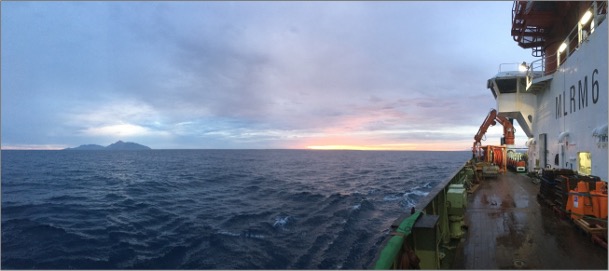New research has revealed that compositional rock anomalies within oceanic plates caused by ancient tectonics influence the trajectory and speed of the plates as they plunge deep into Earth's mantle at subduction zones.
Between depths of 410 and 660 kilometers lies the mantle transition zone (MTZ), a critical region acting as a gateway for materials entering Earth's deeper mantle. Large distributions of basalt rock compositions within the MTZ can cause subducting plates to slow and/or stagnate within this zone, instead of descending directly into the lower mantle. Although basalt reservoirs have been previously been discovered in the MTZ, their origins have remained unclear.
Now, an international team of seismologists led by the University of Southampton has provided evidence an extremely thick MTZ, which can only be explained by a large enrichment in basaltic compositions.
Traditionally, oceanic slabs were thought to have basalt-rich layers confined to their top 5–10 kilometers (the oceanic crust). However, this study suggests that, in certain regions, entire oceanic slabs—approximately 100 kilometers thick—can possess significant basaltic material. The accumulation occurs in the proposed location of an ancient extinct spreading center, in other words a location where plates were previously formed owing to divergent plate motions. Therefore, the basaltic compositional anomaly likely occurred when basalt accumulated within and beneath the plate as the spreading of the plates ceased.
The findings, published in the journal Nature, provide a greater understanding of plate subduction, which recycles surface materials and volatile elements deep into the Earth's interior, sustaining long-term climate stability, atmospheric balance, and the habitability of our planet over billions of years.
This groundbreaking research is part of the VoiLA (Volatiles in the Lesser Antilles) project, in which the team deployed 34 seismometers on the ocean floor beneath the Lesser Antilles.
"This is the first large scale ocean bottom seismic experiment conducted at an Atlantic subduction zone," said Dr. Catherine Rychert, formerly an Associate Professor at the University of Southampton and currently at the Woods Hole Oceanographic Institution. "We were very surprised to find an unexpected and exceptionally thick—approximately 330 kilometers—mantle transition zone beneath the Antilles, which makes it one of the thickest transition zones observed worldwide. Although the Caribbean is well-known for its sunshine and beaches, it now has a new claim to fame in the world of plate tectonics."
"It's wild to think that in some ways tectonic plates have a 'memory' and that affects the way the plates drive mantle convection and mix material back into the Earth." said Dr. Nick Harmon, formerly an Associate Professor at the University of Southampton and currently at the Woods Hole Oceanographic Institution.
Lead author, Dr. YANG Xusong, a former PhD student from the State Key Laboratory of Lithospheric and Environmental Coevolution, IGGCAS emphasized, "We cannot overlook the inherited compositional heterogeneity of subducting oceanic slabs. It may greatly influence their ultimate fate in Earth's deep interior."
Dr. Kate Rychert and Dr. Nick Harmon from the University of Southampton, Professor Saskia Goes from Imperial College London, and Professor Andreas Reitbrock from Karlsruhe Institute of Technology led the experiment. Dr. YANG Xusong conducted the research during his time as a visiting scholar at the University of Southampton. The experiment was funded by NERC (Natural Environment Research Council, UK) and the ERC (European Research Council).

Sunset view from the James Cook Research Vessel which was used to deploy and recover the ocean bottom seismometers. Credit: Stephen Hick, U. College London
Contact:
YANG Xusong
E-mail: xxy458@miami.edu